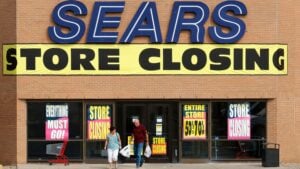
Anyone who played the classic computer game SimCity will have a bit of an insight into the juggle of maintaining a modern city. It’s not an easy job.
The popular game, released in 1989, had a simple concept. A player starts with a few funds to set up some basic roads, housing, a few key industries and a sprinkle of government. The goal of the game is to generate profit so that the city can expand over time into a bustling metropolis.
As the player’s digital city grows it begins to generate data. The player can use the data to advertise to attract new citizens, solve bottlenecks, invest in innovation and connect the different parts of the town. Essentially, the more the player leverages intangible assets, the more the city begins to act like a finely tuned – and profitable – business.
Real cities aren’t exactly like SimCity, but the game has more in common with modern cities than many people realise. Especially with the emerging management system called “Smart Cities.”
A few years ago, Wellington City Council, along with creative studio Buildmedia, began work on creating a “digital twin” of the capital city, a 3D visual representation of Wellington’s physical assets.
The software collects real-time network data from buses, rail, ferries, cars and much else. It also displays bicycle sensor data including how many trips were made within a certain period, the direction of travel and which streets cyclists tend to travel on. The digital twin can even show car park availability and air traffic information.
Wellington is one of only 15 cities in the world creating a “Smart City” by putting all its sensor data through a single system to offer planners a 30,000ft perspective on what’s happening, when and where in their town.
What’s amazing is that Wellington’s digital twin looks very much like the game SimCity. And that’s the whole point. By making it appear as a game, the council can experiment with policies or tweaks to find the best balance for municipal changes, minimising disruption in the physical world of the city.
Wellington can do this because its Digital Innovation team is led by a group of talented people who aren’t afraid to take risks and try something new.
If you know anything about bureaucracies, you’ll probably know they aren’t exactly known for speed or risk-taking. But the people operating Wellington City Council seem to understand the value of using the important intangible asset of city data. And that is a huge step in the right direction.
Other cities are also noticing the huge potential of data.
Further north, Hamilton City Council is rethinking how its city could use data not just to improve efficiency, but to lower costs for Hamilton ratepayers. With help from artificial intelligence company AwareAware, Hamilton has pooled hundreds of different data streams onto a single “Smart City” platform. This tool is already having a noticeable effect on the city.
For example, while it once took about a full day to fix a broken traffic light, a “Smart City” system can now spot a signal outage and organise a new light in about six minutes. That’s an improvement of 7900%.
The delay wasn’t simply due to a lack of centralised data. The real problem was the siloing.
Who is responsible for a broken traffic light? Traffic lights are a road asset, but they are also a transport issue. Those are two different teams in Hamilton. So, even when someone from the road asset team puts up their hand to replace a light, they still needed permission from the footpath team to put up a ladder or set out some cones.
Such a laughably tragic story of undefined responsibility is common in most cities, unfortunately. However, the real-time vision provided by the collected city data is already proving to be a great way of solving siloing problems like this across councils.
Really, the potential of city data is only limited by the imagination.
Sticking with Hamilton, the city is presently in the middle of building the largest inland port about four kilometres from the CBD in Ruakura to complete Waikato’s “Golden Triangle.” Once it’s up and running, all the major logistics companies will have warehouses there.
This means Hamilton is about to have a huge influx of heavy vehicles traipsing through the city, ballooning the cost of road maintenance, creating extra emissions and introducing new safety hazards for residents. In years past, all those new costs would be unfairly lumped onto Hamilton residents by increasing their rates.
The city council didn’t want to end up in that position, so it added thousands of sensors along new and existing arterial routes to measure how heavy traffic was using its roads. By gathering this data, the city can more accurately pass on maintenance costs to the logistics companies, keeping the rates low for residents.
But it gets better.
Those sensors can differentiate between resident and visiting vehicles by tracking the Bluetooth connections emitted from the hands-free sets. The resident cars don’t even need to be registered as “residents” since if the same Bluetooth signal is captured every day, it can be safely assumed to belong to someone living in Hamilton. No personal identities are captured at all.
However, since these sensors can also pick up tourist cars that metadata can theoretically be sold to petrol stations, fast food restaurants, local tourism providers and other businesses. The data would create a better picture of tourist preferences – what they like to eat, where they go and for how long they stay. On top of that, advertising companies would certainly appreciate linking this data to their digital billboards which use a model of charging clients by the number of cars passing by.
It’s important to reiterate that none of this gathered metadata is personal. Knowing when a car drives near a sensor tells the sensor nothing about who is driving it or even what kind of car it is. Yet by collating this simple car data with weather, census, real estate, business and other data, councils can create an impressive overview of what’s really going on in their cities.
This kind of digital innovation sells itself.
When (not if) the strategic deployment of data makes obvious improvements to a city’s efficiency, while lowering costs for ratepayers, that city’s brand will rise as a result. Suddenly, councils will be pushing people away who are desperate to live in such an exciting city. That’s a great “problem” to have.
As the sources of data widen, and the analysis gets smarter, there’s no reason why cities can’t issue residents with apps that feed them exactly the same real-time information seen by the council about road closures, bus timetables, rubbish collection, school zoning and myriad other city insights.
It’s even possible that with better data, a city’s public transport network might become self-sustaining, or perhaps turn a profit for the first time. Imagine that!
The point of unlocking a city’s intangible assets is about getting back to what a city is all about – providing great services to its residents.
In that light, city data is a service. And the cities that figure out how to leverage this important intangible asset will outcompete those that stay siloed and choose to play silly bureaucratic games of patch protection.
Authors:
Dean Prebble is a Director of EverEdge, a global intangible asset advisory, corporate finance and investment firm with teams in New Zealand, Australia, Singapore and the US.
Jourdan Templeton is the CTO at Aware – a leading technology company focusing on AI, BI and IoT, headquartered in New Zealand with teams in Singapore and US.
Originally published in The Post.
Recommended Reads
Free 1hr Consultation
Intangible assets are a company’s greatest source of hidden value and hidden risk. Make the valuable visible in your organisation.
Sign-up for a free 1-hour consultation today.




